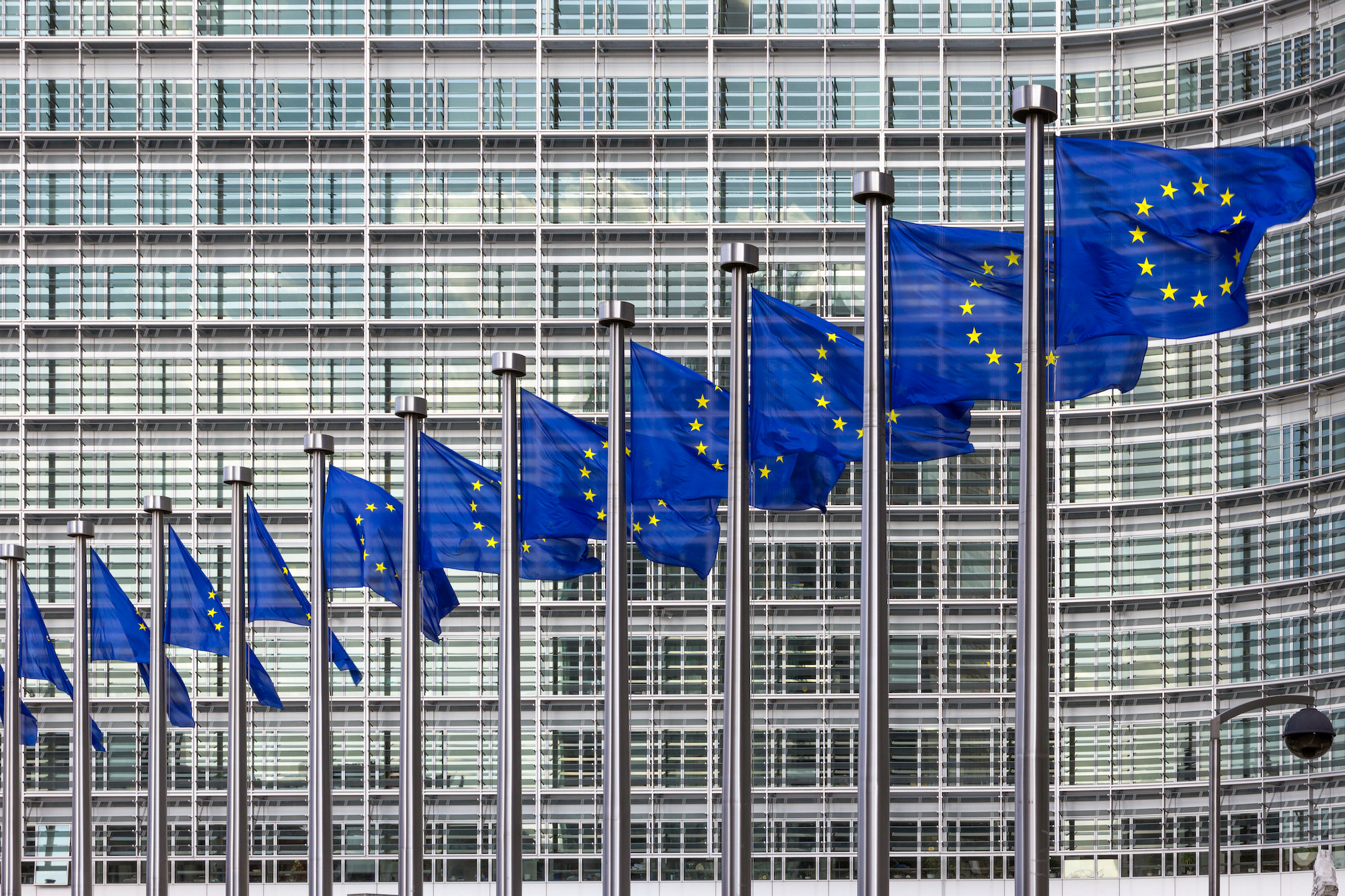ANALYSIS
EMFA comes at a critical time for public media
19th April 2024
The European Media Freedom Act is certainly a significant step in the right direction in offering better protection for independent public media – and it comes at a crucial time.

In March, the European Parliament adopted the European Media Freedom Act (EMFA) designed to better protect journalists and media in the European Union from political and economic interference.
The new law bans governments from pursuing journalists to reveal their sources by deploying spyware. It also introduces transparency measures for media ownership and state advertising, procedures to check media concentration, as well as a new layer of protection for news outlets from takedown decisions made by big online platforms.
Importantly, EMFA also enshrines the editorial independence of public service media (PSM) in the European Union. The law says the leaders and board members of public media organisations should be selected through “transparent and non-discriminatory procedures for sufficiently long terms of office.
“Public media will have to be financed using transparent and objective procedures, and the funding should be sustainable and predictable.”
The lead lawmaker for EMFA, the German conservative Sabine Verheyen, said: “Press freedom is threatened worldwide, including in Europe: the murder in Malta, threats to press freedom in Hungary, and many other examples clearly prove that.
“[EMFA] is our answer to this threat and a milestone in European legislation. It values and protects the double role of media as businesses and as guardians of democracy.”
Why is it important to protect PSM?
Independent public service media play a critically important role in democracy. But in several cases across Europe, PSMs’ governance and funding are linked directly to the state, which exposes them to the risk of political interference if not properly safeguarded.
EMFA – particularly Article 5 – provides minimum-standard regulations to guarantee sufficient, sustainable, and predictable financial support. The editorial and functional independence of public service media is also at the core of the regulations, which also encompasses the rule that member states ensure an unbiased and diverse range of information and opinions.
But while the EMFA is certainly needed and welcomed, it comes at a time of significant challenges for public media across the EU, from sustainable funding to political interference. Here we highlight some of the most significant issues:
Snapshot of countries
Germany
In Germany, the household levy which funds public service broadcasters is under review, with a significant number of politicians publicly opposing any increase to the fee. Germany has one of the world’s most extensive public broadcasting media networks, with three national broadcasters funded through a fee charged to households, companies, and institutions. The current fee for private households is €18.36 a month, and in February the Commission for the Determination of Financial Needs for public broadcasters (KEF) recommended an under-inflation increase by 58 cents from 2025.
The fee and the rules that govern the public broadcasters are determined by an independent panel, but they must be agreed to by all of Germany’s state governments, with many indicating an unwillingness to increase the fee. The broadcasters are also undergoing reform, which has been largely welcomed as equipping them for the digital age, but there is concern about the influence of private media groups on such reforms.
The pushback against an increase in the household levy comes at a time when German public broadcasters have reported cost pressures. Both the ARD and ZDF said that they are struggling to retain talent and compete with the power of foreign digital giants, while still maintaining their public service mandates.
Read more: Scrutiny of Germany’s licence fee mounts again
Greece
Media freedom groups have highlighted the erosion of free media in Greece for over a decade. Recent reports suggest this concerning trend has continued, with both public and private media threatened by media capture. The European Centre for Media and Press Freedom said Greek journalism is under the “sustained threat” of surveillance, abusive legal action, and economic and political pressures, which threaten independent journalism and press freedom in the country. The Council of Europe similarly expressed concerns over press freedom in March.
Subscribe toour newsletter
Keep updated with the latest public
media news from around the world
A report by the IPI, published in January, said that the Greek public broadcaster suffered from “a chronic lack of editorial and institutional independence”, with a lack of safeguards to insulate it from political power. It added that interference from government officials was commonplace. There have been significant reforms since 2019, which has brought a larger degree of independence and stability, though there remain concerns about how enduring this may be.
Ireland
Public broadcaster RTÉ is facing a major financial crisis due to the loss of almost €22 million in licence fee revenue, which many households are refusing to pay in the wake of a payments scandal. The unstable financial situation is now in the hands of the government, which plans to try and find a sustainable funding model for RTÉ in the coming months. The scandal around undisclosed payments to a former RTÉ presenter, first revealed in the summer of 2023, has severely dented trust in the public broadcaster and contributed to 137,057 fewer households paying the TV licence fee.
But even before the scandal, RTÉ faced serious financial pressures. In February 2022, former Director-General Dee Forbes said the licence fee model was “utterly broken”. Then, in 2023, the government provided €15 million in a bailout.
Read more: Ireland: RTÉ promised funding reform
Italy
The independence of the Italian public broadcaster, Rai, has been under scrutiny since several executives considered to be government allies were appointed to influential positions. Civil society organisations have since denounced a political takeover of Rai. Nicknamed “TeleMeloni” by opposition parties – a reference to Italian Prime Minister Giorgia Meloni – the Rai has also faced criticism for its reporting and response to the conflict in Israel and Gaza.
Besides reported political interference, Rai is also facing financial difficulties following a significant funding cut by the Italian Council of Ministers. The political grip over Rai as well as its financial instability has put the independence of the public broadcaster at serious risk.
Read more: Pressure on Rai continues with licence fee cut
Poland
Within a week of being sworn into office in October 2023, the new pro-European Polish government promised to reform the country’s public broadcasters and restore independence and impartiality after years of political capture by the far-right PiS administration. TVP, Polsat, and the 17 public radio station were put into liquidation to allow the reforms within the media organisations. Changes to the management of the main public television station TVP, as well as changes to programming, were made shortly after it went into liquidation.
This abrupt transformation of public media has been met with a mixed reaction. While the reforms to restore public media’s independence and better shield them from political interference were applauded, media freedom organisations called on Prime Minister Donald Tusk’s government to avoid repeating the mistakes made by the previous government and ensure the reforms respect the rule of law and the independence of newsrooms.
Read more: Public media in Poland struggles for a reset

Slovakia
The Slovakian public broadcaster RTVS is currently facing a major challenge with the far-right government of Robert Fico trying to pass a new media law that would give it a grip over the public broadcaster’s editorial independence. The Slovak government has been attempting to gain greater control over RTVS in recent months by tightening the broadcaster’s budgets and asserting they would be in favour of a state media outlet.
The RTVS Act proposal plans to divide the public broadcaster into two entities and overhaul the organisation’s board, which would have the power to appoint the Director General. The project of the Slovak government on the future of RTVS raised serious concerns across the European Union, as it could have a critical impact on the independence of media in Slovakia and consequently on the state of democracy in the country.
Read more: Slovak government urged to abandon new public media law
Slovenia
After a period of reform following a turbulent few years marked by staff strikes against an executive seen as allied to the government, public broadcaster RTV SLO is now working to slowly rebuild trust. However, the aftermath of the COVID-19 pandemic and other factors has left RTV SLO with a lack of funding and staff. The Slovenian public broadcaster is now in the process of rebuilding what has been destroyed by previous management with little means and a depleted team.
There are hopes that a new media law could rectify this situation, but it was welcomed with cautious optimism as this “Act on Media” offers faint solutions for the financial sustainability of RTV SLO. Furthermore, under the pretext of “transparency of state advertising”, the law provided for the consent of the government for advertising campaigns, which could be seen as a fresh attempt to politicise the media.
Read more: Trust at RTV SLO: “It is easier to ruin than rebuild”
Sweden
Even though Sweden’s public service media enjoy a high level of public trust, Swedish Radio and Swedish Television (SVT) are going through a difficult moment financially. In recent months, both organisations have cut their budgets, and had to rethink their structure, which has involved redundancies.
This is taking place amid a government investigation into public media focusing on, among other things, the renewal of their mandate. The investigation has been criticised for lacking any inclusion of directives to examine ways to enhance independence, such as diminishing the government’s appointment authority and preventing the appointment of politicians to roles within the Management Foundation.
Read more: Swedish public media feeling financial and political pressures
While public media remain well-trusted in many EU countries they all face a growing number of challenges to their future viability. As explored here, there is a clear need to bolster the defences of European public media. In this sense, it is hoped that the EMFA provide a level playing field of enhanced protection across the continent. The Public Media Alliance maintains that national governments and independent regulatory authorities must work with media stakeholders for the full and effective implementation of EMFA.
While EMFA is not the panacea some had hoped for, and while it has been watered down by member states during the legislative process, it is still a step towards progress. It will establish a common set of minimum standards to be applied across the entire bloc, with the goal of improving public access to independent and accurate information, protecting journalists and news organisations against government interference or attacks.
However, how the EMFA affects countries such as Hungary where public media is already captured, or Slovakia, where the government appears to be attempting a similar-styled takeover, remains to be seen.
Related Posts
13th March 2024
Coalition calls for effective implementation of EMFA
PMA has joined other CSOs in urging all…
1st December 2023
EMFA: Protection of journalists’ sources must be in line with human rights standards
The Public Media Alliance joins calls…
8th November 2023
EMFA: PMA joins call for effective safeguards for strong and independent public service media
PMA has joined a coalition of 19…
9th February 2023
Joint letter urges European Parliament to strengthen EMFA
PMA joins fellow media groups to call…